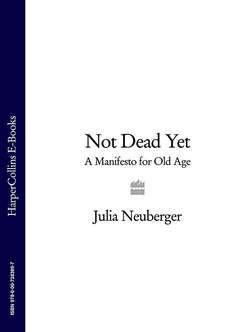Читать книгу Not Dead Yet: A Manifesto for Old Age - Julia Neuberger - Страница 31
What kind of work?
ОглавлениеThanks to a recent ESRC Report, Older People’s Experience of Paid Employment: Participation and Quality of Life, by a team from Sheffield University, we know that ‘the highest levels of well-being in any category were among those who were employed when over retirement age’.10 But – and this is the most important finding – of all those who were employed, life satisfaction was highest among the part-timers, and lowest among those who were forced to carry on working because they needed the money. In other words, it is not just a question of whether one is employed, unemployed or retired, but whether one wants to be.
Whether people want to be employed depends on their finding work which suits them. So there really does need to be more room for part-time and flexible employment for older people, which many say is what they want. The 2003 Joseph Rowntree Foundation report The Role of Flexible Employment for Older Workers showed that the choice depends partly on who you are.11
Leaving work tends to be a positive choice for workers with other advantages – including those (especially men) who have been with their present employer for longer, and are therefore more likely to have accumulated savings and pension entitlements, and those who have paid off their mortgages. People with health problems are also inclined to leave work early, especially low-paid men. But ‘early retirement’ for them is more likely to mean they were unable to stay employed, rather than something they chose.
Self-employment offers the job quality most comparable to that enjoyed by permanent full-time employees. Temporary employment rates next in terms of job quality, although this is more the case for people on fixed-term contracts than for casual workers or agency temps. Part-time employment offers the poorest job quality among the three types of flexible employment, and yet it is extremely popular amongst many older people. Overall, women appear more successful than men in finding flexible jobs for positive reasons, but they often find that these jobs are poor quality, or extremely badly paid.
It is worse than that for many part-time older women workers, according to the report Older Women, Work and Health (Lesley Doyal and Sarah Payne).12 Some of the supposedly ‘light work’ offered to women often leads to musculoskeletal disorders as a result of repetitive strain injury from keyboards or simply from having to move heavy loads which no one had recognized as being necessary. Take French train cleaners, for example. Doyal and Payne found their labour force was mixed, but only the women were allocated to cleaning the toilets, which was work that was dirty, physically demanding and required considerable technical skill. It involved travelling over 20 kilometres a day and maintaining uncomfortable postures, with a quarter of the time in a crouched position. It is hardly surprising that those women suffered from high rates of back pain and other problems and were often absent from work.
‘Work is usually a healthier occupation for a 60-year-old white solicitor, for example,’ says the report, ‘who has a high degree of control over her working life and can buy domestic help if she needs it, than it is for a 60-year-old African Caribbean office cleaner, with little job security and a heavy domestic burden.’
Even our own community nurses, coming up for retirement at 55 with relatively generous pension settlements, show little sign of being lured back to work, even when they are told that they will be able to keep their full pension and earn on top, so desperate is the need for their skills and experience. So, despite all the evidence of older women gaining benefits from continuing to work, it is clear that for some women the thought of carrying on – perhaps because they are burnt out by what they have been doing, because they do not trust management, or because they have seen too many upheavals in organizational terms in recent years – just doesn’t appeal very much.
So there is a paradox here, at least. Most research agrees that staying in work for women provides them with better social networks and keeps them healthy. Yet whether they actually want to work depends on a range of other factors, like flexibility, stress, respect, conditions and safety: the rate of slip, trip and fall injuries rises significantly with age for women, but not apparently for men. So we have to do more to prevent accidents, more to appreciate those women and what they do, and perhaps more too in those health professions where they are in short supply to give them control over their own work.
